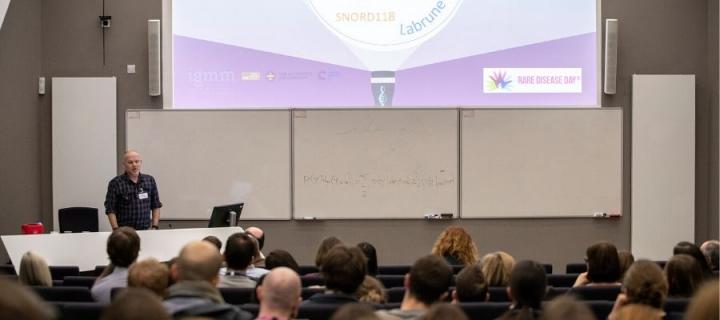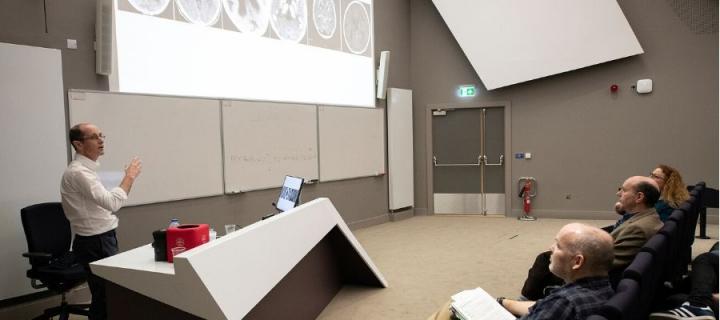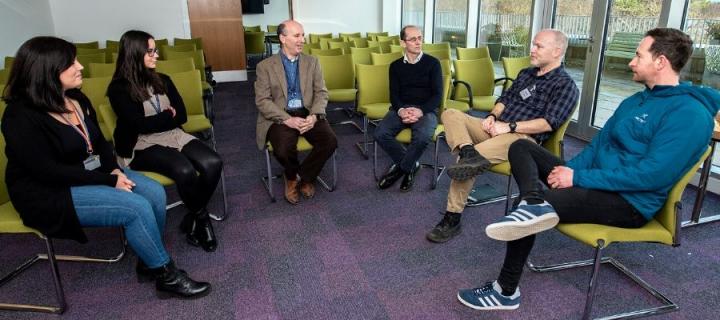Shining a Light on Labrune syndrome
On 25 February, scientists, staff and students from across the Institute and wider University were fortunate enough to hear first-hand from a family affected by Labrune syndrome, a very rare genetic condition: February 2020

Labrune syndrome – or leucoencephalopathy with calcifications and cysts (LCC) as it’s formally known – is studied by researchers at the Centre for Genomic and Experimental Medicine (CGEM).
It is extremely rare with only a very small number of cases reported worldwide. Associated with mutations in the SNORD118 gene, it can present with a variety of symptoms including seizures and slowing of cognitive performance.
With such little information available to doctors and families, diagnosis can prove not only challenging but a long and frustrating journey.

On behalf of the IGMM community, CGEM Director Professor Tim Aitman welcomed Simon - the father of Evie, an 11 year old girl living with Labrune syndrome – to this year’s Shining a Light on Rare Genetic Disorders event.
Prefaced by a fascinating introduction to the biology of the disease by clinician scientist Professor Yanick Crow, Simon gave a moving account of his family’s experience.
Labrune syndrome is most often diagnosed in children and young adults and its progression is variable. To date there is no specific treatment.
In Evie’s case, after years of countless medical appointments, tests and trips to hospital, she finally received a diagnosis around age 6. Five years on she is no longer able to walk or talk, receiving full time care, but Evie continues to inspire everyone around her as a smiling, happy girl who especially loves riding in fast cars.
Living with such a rare condition means it’s difficult for Evie’s family to know what the future holds, but being able to connect with other affected families and to learn from each other’s experiences has been invaluable to them.

It is hoped that funding for further research may one day lead to the discovery of treatments which can help people like Evie. In the meantime, Evie’s family and IGMM staff and students will join forces to raise awareness and donations in support of Labrune syndrome research, running a bake sale in March and taking part in the Edinburgh Marathon Festival this May.
Donations can also be made to the University of Edinburgh’s Labrune Syndrome Fund.
Simon shared with us the story of his family and how they had together coped with having a child with a serious neurodegenerative condition over 11 years. It was a powerful and emotional story that provided an inspiration for those of us at IGMM who are researching to find the causes and treatments for serious genetic disorders. Public and patient engagement is so important for an institute such as IGMM which only infrequently catches a glimpse of what these disorders mean for patients and their families.
It gives our family and families like ours hope that with continued research we might be able to slow or even stop the progress of this dreadful disease. We would like to extend our thanks to IGMM for their dedication to this project
Links
- Evie’s Story, Naomi House
- More about Labrune syndrome: www.radiopaedia.org
- Donate to Labrune syndrome research at the University of Edinburgh: Donation page
- Watch the presentations below:
- Video: Shining a light on Labrune syndrome
- shining a light event 2020

